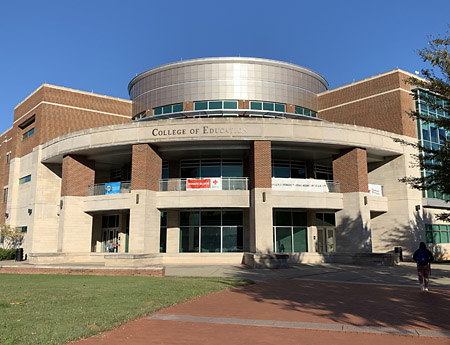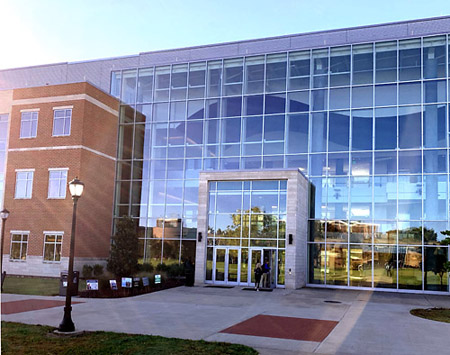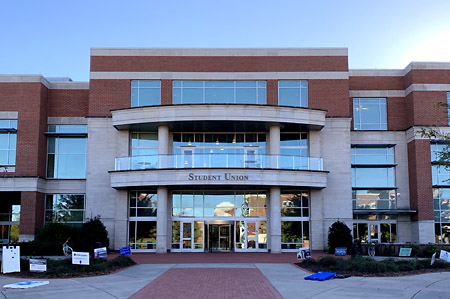MTSU History

James Walker Library
Middle Tennessee State University was established through the General Education Bill of 1909 and named on September 11, 1911, as Middle Tennessee State Normal School. The original campus had one hundred acres, 125 students, and five buildings.
A Nashville based architect named C. K. Colley designed the school’s buildings in an upscale Classical Revival style and today the President’s House, Kirksey Old Main, Rutledge Hall, and the Alumni Center still make up the historic core of the campus. The first men’s dorm, Jones Hall, was constructed in a clean Classical Revival style in 1922.
In 1925 the normal school was renamed Middle Tennessee State Teachers College and became a four-year institution offering students a Bachelor of Science degree. The school began offering the Bachelor of Arts degree in 1936.

College of Education
Thanks to increased state funding for higher education during the administration of Austin Peay, the college was able to build a new library, science building (Wiser-Patten Hall), a teacher’s training school (Pittard Campus School), and additional dormitories. The college received accreditation from the Southern Association of Colleges and Schools in 1928. Even though the college was expanding, the Great Depression brought uncertainty to the college. New Deal agencies assisted students and the college, helping them to stay afloat during the poverty-stricken times. The National Youth Administration provided scholarships and funds so students could have jobs while they attended school.

MTSU Science Building
In 1943 officials changed the college’s name to Middle Tennessee State College. Student enrollment was still very low until the end of World War II thanks to returning veterans who took advantage of the GI Bill and entered the institution in record numbers. During the presidency of Quintin M. Smith the college was rebranded and took on a new mission in education, liberal arts, and the sciences. The college established a Graduate School in 1951. Fifteen new major buildings were constructed from 1951 to 1964 providing additional dorms, classrooms, a recreation building, and an up-to-date library. When state officials and President Quill Cope, a former State Commissioner of Education, dedicated the new Cope Administration Building in 1965, the college had firmly entered its modern era, and it officially received the designation of university. As Middle Tennessee State University expanded, Peck Hall, a liberal arts classroom building; Keathley University Center; Davis Science Building; Murphy Athletic Center; a library expansion; and the McWherter Learning Resources Center were built between 1967 and 1975.

Student Union
As the college continued to grow through the 1980’s, the university developed nationally recognized programs in aerospace, mass communication, historic preservation, and recording industry management. In 1984 Governor Lamar Alexander’s program to develop Tennessee higher education helped create the Center for Historic Preservation. A year later the Center for Popular Music was established. By the beginning of the 1990’s the Bragg Mass Communication Building was under construction.
As a result of the campus growth of the 1990’s, buildings like The Business and Economic Research Center which contributes to economic planning and development throughout Tennessee, as well as the Albert Gore Sr. Research Center which contributes to American political history, have become mass contributors of students entering their respected fields. The campus continued to expand, and the Cason-Kennedy Nursing Center, along with the Miller Equine Center and Arena, the Murphy Center Complex, the Business Aerospace Building, James E. Walker Library, and the Health, Wellness & Recreation center were all constructed. This growth and expansion of the university’s facilities and academic programs took place during the leadership of President James Walker, who was the first African American president of a formerly all-white state university.
The University is still growing rapidly, erecting and tearing down buildings in an effort to make MTSU as visually appealing as it is easily accessible. Even with all the new buildings going up, these historical buildings still make up the heart of campus and keep the rich traditions of Middle Tennessee alive.




